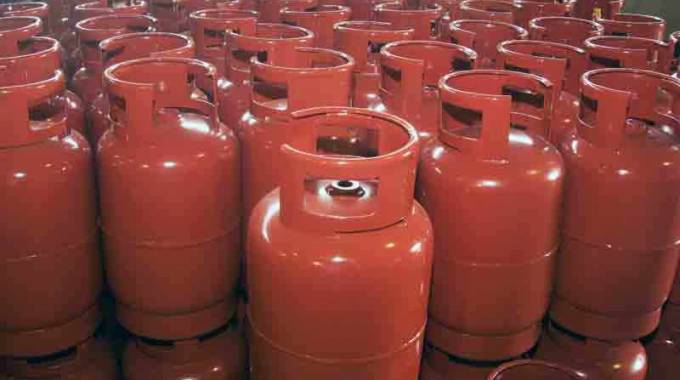Source: The potent bombs in our homes | The Herald November 27, 2019
Leroy Dzenga Features Writer
Zimbabwean households are relying on liquefied petroleum gas (LP Gas) as an alternative for cooking, or rather, electricity has become the alternative.This is in response to power challenges being experienced in the country.
With the new cost structure introduced by Zesa Holdings, some families have settled to use electricity only for lighting, charging their cellphones, laptops and watching television.
Even those who can afford heavy-duty generators are frustrated by the high cost availability of petrol and diesel, let alone its availability.
Regulators believe there will be an increase in the volume of LP gas used in the country.
Trends seem to agree.
Zimbabwe Energy Regulatory Authority (ZERA) customer services manager Engineer Nobert Matarutse recently told The Herald projections were that annual LP gas usage would grow upwards from the 38 million kilogrammes used in 2018.
“Judging by the historical information at hand whereby we consumed 38 million kilograms by the end of 2018, we are expecting not less than 50 million kg this year.
“I am sure we all agree that there has been increased usage of LPG because of the increased electricity load shedding in the country. In 2018 it was actually better in terms of load shedding,” Eng Matarutse said.
These figures mean, according to the current population estimates, each Zimbabwean living in Zimbabwe would have used around 3kg in a year.
Such spread brings with it an apparent danger.
LP gas use has up to now been out of necessity and some if not most Zimbabweans do not have the requisite knowledge or equipment needed to handle fires.
A snap survey by The Herald showed many households do not have fire extinguishers despite admitting to owning gas tanks which pose an obvious fire risk.
“I do not have a fire extinguisher at home, I am careful with gas. I don’t think I need one,” Ms Gladys Kaendesa told The Herald.
Others have heard tales they would not want to experience i their homes.
“I do not want to see any gas in my house. I would rather use firewood to cook if there is no power. I am wary of gas and prefer to be safe than sorry,” another Harare resident, Clever Manditsvara, said.
It appears the little information on LPG does not match its popularity.
There also appears to be a legal vacuum.
There are no by-laws requiring households to have fire extinguishers.This is a classic case of regulations being overtaken by events.
Harare Fire Brigade divisional officer Mr Clever Mafoti said there is a regulatory gap.
“According to the fire by-law of 1968, husehold fire extinguishers are not mandatory. The fire by-law we have only covers portable and fixed fire equipment at commercial as well as industrial sites.
“We are working on getting the fire by-laws to be reviewed,” he said.
Households are, however, not entirely unregulated; there are a few handling stipulations which must be adhered to.
“For a household, the maximum gas allowed is 19 kilogrammes. Anything above that must be stored outside the house in a cage,” Mr Mafoti said.
For now, the increase in gas usage has not had a corresponding spike in related fires.
“I cannot say there is a rise. There are scattered incidents, but not many. The ones we have covered have been fatal. Like in Chitungwiza, somebody ignited their gas stove, oblivious that there was a leak. Another incident was at a selling point, where someone felt they needed to smoke unaware there was a leak. They lit their cigarette and there was an explosion,” Mr Mafoti said.
The City Fire Department says although their mandate requires them to focus on preventing fires more than fighting them, they are ready to deal with any mishaps.
“We had some partners who helped us increase our capacity. All our fire stations in Kuwadzana, Waterfalls, Greendale and the main one, have functional fire tenders. We recently recruited and we have enough manpower,” said Mr Mafoti, emphasising that the dark days of their apparent lack of capacity were now a thing of the past.
Currently, Harare Fire Department has 15 fire tenders, nine specialist vehicles, five trucks with mounted aerial ladders shared among the four fire stations.
If predictions by ZERA materialise, they would signify a 1 000 percent increase in gas uptake in Zimbabwe over a decade.
This is way higher than the global average.
According to World LP Gas Association Annual Report, global gas consumption rose by 1,7 percent in 2017.
In 2010 Zimbabwe imported 5 million kg of LP gas and six years later in 2016 the figure rose to 24 million kg. Last year the figure stood at 38 million kg, which is projected to rise to 50 million kg by year-end.
There is hope the growth in gas usage does not result in an increase in fires.
Gas brings a degree of convenience but in essence, we all have potential bombs in our homes.
Feedback:
Email: dzengavisuals@gmail.com
Twitter: @leedzenga
Newer Post
VP Chiwenga attends Cabinet meeting Older Post
42nd Cabinet meeting decisions matrix 
COMMENTS